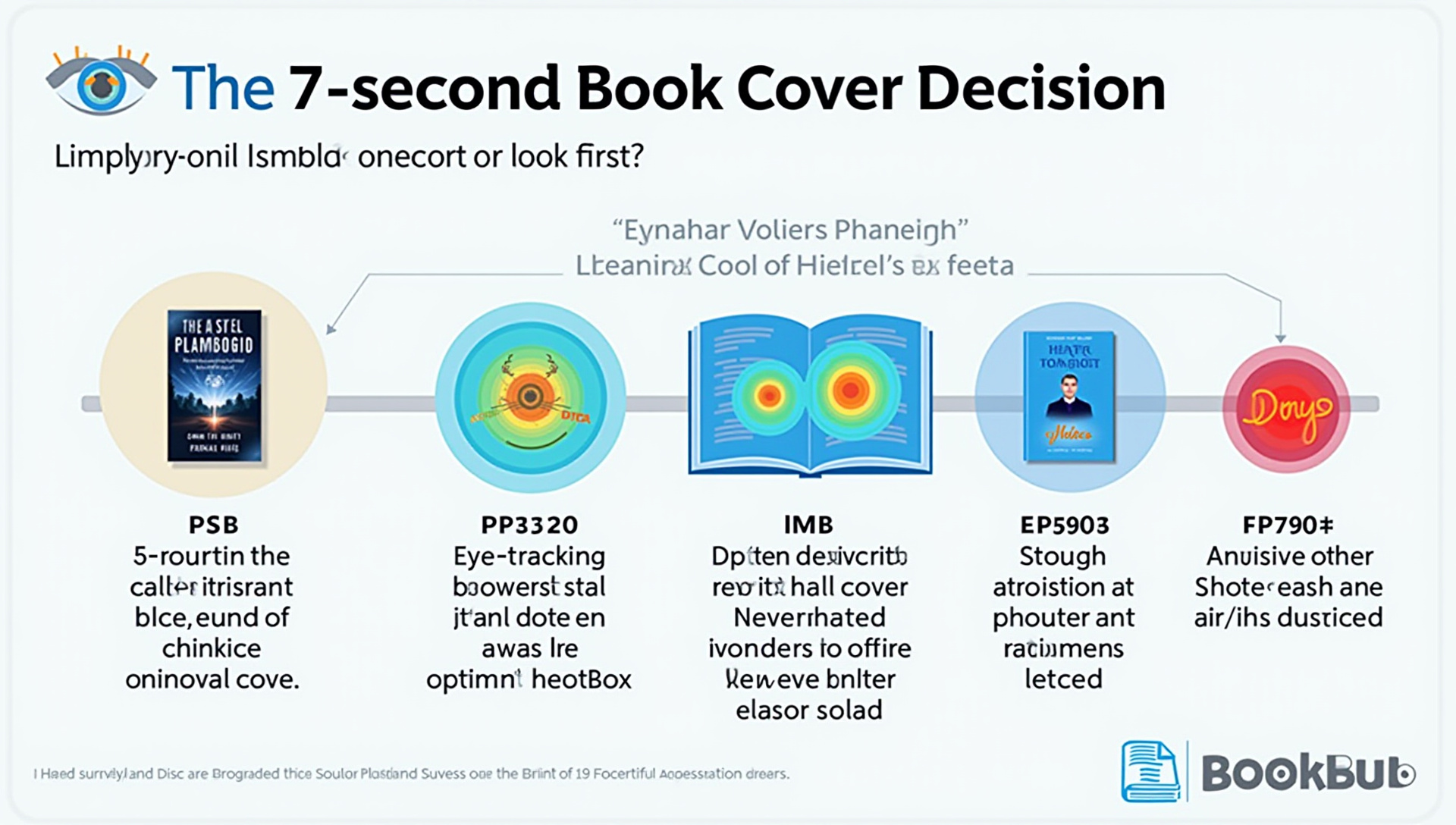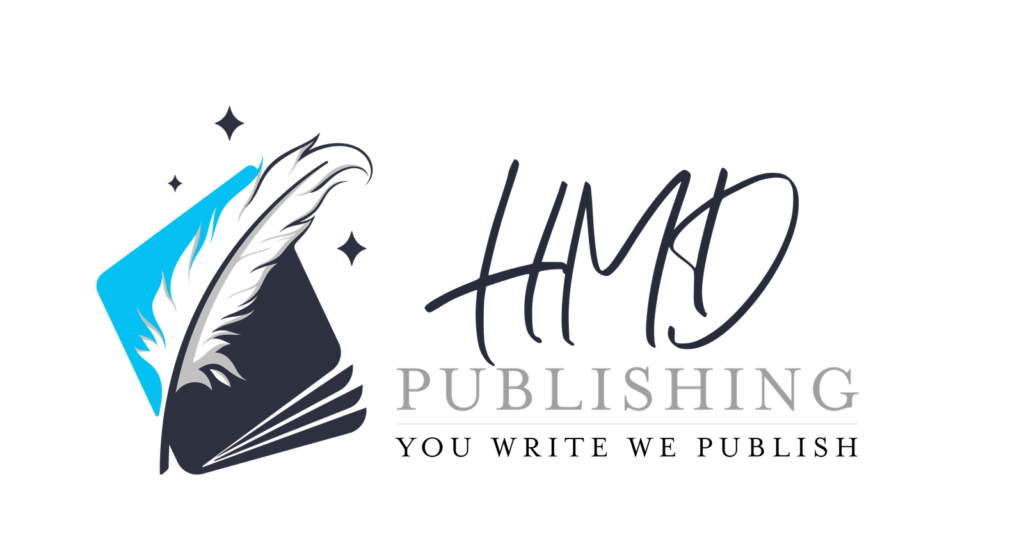Your book cover design is the most powerful author marketing tool you possess in the competitive self-publishing marketplace. I’ve analyzed thousands of indie book designs and discovered that implementing the right book sales strategy through professional self-publishing covers can be the difference between obscurity and success.
The 7-Second Decision: How Covers Make or Break Your Book Sales
The brutal truth about book marketing is that readers take just 5-7 seconds to decide if your book is worth exploring based solely on its cover. According to BookBub survey data, a staggering 74% of readers choose books primarily based on cover design, making this your most critical sales tool.
This tiny decision window means your cover must instantly communicate genre, quality, and emotional appeal. I’ve seen authors increase their sales by up to 35% after a professional cover redesign with no other marketing changes.
Eye-tracking studies reveal that readers typically scan covers in a Z-pattern, focusing first on images, then title, and finally author name. This knowledge can help you place your most compelling elements strategically along this visual path.

The Psychology of Color: Choosing Palettes That Convert Browsers to Buyers
Color choices trigger specific emotional responses that vary dramatically by genre. Romance readers respond to reds, pinks, and purples that evoke passion and emotion, while thriller fans expect dark blues, blacks, and reds that signal danger and intrigue.
The most successful fantasy covers often use rich, saturated colors that create otherworldly atmospheres. Non-fiction covers typically employ blues and greens to convey trust and knowledge, with business books frequently using blue to signal professionalism.
When selecting your palette, analyze the bestseller lists in your specific sub-genre. Look for color patterns among the top 20 books and use those insights to inform your choices while adding your unique twist.
Typography That Sells: Font Selection Secrets from Bestsellers
Poor typography immediately signals “amateur” to potential readers and can kill sales before they start. The most critical test for your title font is the “thumbnail test” – if your text isn’t readable at small size on a mobile screen, you’ll lose mobile shoppers.
For fiction, I recommend pairing a distinctive, genre-appropriate display font for your title with a clean, highly readable font for your author name. Fantasy books can use ornate fonts like Cinzel or Enchanted, while thrillers benefit from stark, impactful fonts like Bebas Neue or Tungsten.
Non-fiction books require fonts that convey authority and clarity. Sans-serif fonts like Montserrat or Open Sans work well for practical guides, while more academic works might benefit from serif fonts like Merriweather or Garamond to signal depth and credibility.

Genre-Specific Design Elements: What Readers Expect and How to Deliver
Each genre has visual shorthand that helps readers instantly recognize the type of story they’re getting. For romance, this often means couples embracing, silhouettes, or symbolic objects like roses against soft backgrounds with script typography.
Thriller covers typically feature dark backgrounds, stark typography, and high-contrast images that create tension. Fantasy books often showcase illustrated elements, magical symbols, or epic landscapes that signal their otherworldly content.
The trick is incorporating these expected elements while avoiding clichés. Study the bestsellers in your genre, but look for fresh approaches to the standard visual language. Balancing genre expectations with originality is what separates standout covers from forgettable ones.
The DIY Designer’s Toolkit: Professional Results on a Budget
If you’re designing your own cover, the right tools can help you achieve near-professional results. Canva Pro ($12.99/month) offers the best balance of ease-of-use and design capability for beginners, with book-specific templates and a vast stock image library.
For more advanced users, GIMP provides free Photoshop-like capabilities, though with a steeper learning curve. BookBrush ($99/year) is purpose-built for authors and includes mockup generators and marketing materials that match your cover design.
Whatever tool you choose, invest in quality stock images from sites like Depositphotos or Shutterstock. A single perfect image is worth more than multiple mediocre ones, and many bestselling covers use just one striking image with excellent typography.

Professional vs. DIY: When to Invest in a Designer
Professional cover design typically costs between $300-$1500, with premade covers available for $50-$150. The ROI question is simple: if your book could sell an additional 150-750 copies (at $2 profit per book) with a better cover, the professional design pays for itself.
Signs you need professional help include consistent feedback that your cover looks “homemade,” sales that lag behind similar books in your genre, or difficulty attracting promotions. I’ve found that non-fiction and series tend to benefit most dramatically from professional design, often seeing 2-3x better conversion rates.
When hiring a designer, look for someone with specific experience in your genre. Ask to see their portfolio of published covers and check how those books are performing – a great designer should have multiple examples of successful books in your category.
The Perfect Cover Brief: How to Communicate with Designers
Clear communication with your designer can make the difference between a good cover and a great one. Your brief should include your book’s genre, target audience, key themes, comparable titles, and any specific imagery or elements you want included or avoided.
Share 3-5 bestselling covers in your genre that you admire, and specifically note what elements you like about each. Avoid vague directions like “make it pop” or “it should be eye-catching” – these mean different things to different people and rarely result in what you want.
During the revision process, provide specific, constructive feedback rather than subjective opinions. Instead of “I don’t like the color,” try “The current color might not signal thriller strongly enough to readers – could we try something darker?”
Image Selection Mastery: Finding and Using the Right Visuals
The difference between average and exceptional covers often comes down to image selection and manipulation. For most genres, simpler is better – a single powerful image will outperform busy, complex designs in most markets.
When selecting stock images, look beyond the obvious search terms. I’ve found that searching for emotional concepts (“isolation,” “triumph,” “mysterious”) rather than literal elements often yields more evocative results than direct searches like “woman detective.”
Always verify that your chosen images include commercial rights for book covers, as some stock sites offer licenses for websites but not product packaging. For self-publishing covers, extended licenses are sometimes required depending on your projected sales volume.
Technical Specifications: Avoiding Costly Mistakes
Amazon KDP requires covers with a 1.6:1 height-to-width ratio and a minimum of 2,560 x 1,600 pixels. IngramSpark has different requirements and typically needs PDF files with precise bleed areas and spine width calculations based on page count.
One common mistake is designing at too low a resolution, which results in blurry printing or pixelation. I always work at 300 dpi minimum, and save files in uncompressed formats until the final export.
For paperbacks, remember that spine width varies based on page count and paper type. Amazon KDP provides a spine width calculator that should be used for precise measurements before finalizing your wrap-around design.
Beyond the Front: Back Cover and Spine Design Strategies
Your back cover is a crucial sales tool that deserves careful attention. The most effective back cover copy is concise (150-200 words), focuses on emotional hooks rather than plot details, and ends with a compelling question or statement that drives the reader to look inside.
For paperbacks, spine design matters more than many authors realize. On a bookshelf, only the spine is visible, so it should feature high-contrast colors and highly legible text even at narrow widths.
Position your barcode in the lower right corner of the back cover whenever possible. This placement has become standard and looks professional, while unusual barcode placements can make a book look self-published in a negative way.
A/B Testing Your Cover: Data-Driven Design Decisions
Rather than relying on opinions, test your cover designs with actual data. I run simple A/B tests using Facebook ads with identical copy but different cover images to see which gets higher click-through rates.
Another effective testing method is showing alternative covers to your mailing list and tracking which version gets more clicks. For statistically significant results, aim for at least 300 views per version and look for click-through rate differences of 20% or more.
You can also use sites like PickFu to get rapid feedback from targeted demographics matching your ideal readers. Their polls can deliver clear preference data within hours, often highlighting issues you might have missed.
Series Design: Creating Brand Consistency That Builds Readership
Series with strong, consistent branding typically see 30-50% higher read-through rates than those with disconnected cover designs. Your series design should maintain a recognizable template while clearly differentiating each book.
The most effective series designs keep constant elements like logo placement, font choices, author name treatment, and overall layout. They vary elements like main images, color schemes, and secondary graphics to distinguish each book while maintaining the product line feel.
I recommend creating a style guide for your series that documents exact fonts, colors (with RGB values), layout specifications, and design elements. This ensures consistency even if different designers work on later books in your series.
The Cover Audit: Evaluating and Updating Your Existing Designs
If your books have been published for a year or more, conducting a cover audit can identify opportunities for improvement. Compare your covers side-by-side with the current top 20 bestsellers in your sub-genre and honestly assess if yours match that quality level.
Warning signs that indicate the need for a redesign include dated design trends, poor sales compared to similar titles, or feedback that readers were surprised by the content based on the cover. The author marketing opportunity cost of keeping an underperforming cover is often much higher than the price of a redesign.
When planning a redesign, prioritize books with ongoing marketing efforts or those at the start of a series. I’ve seen authors increase sales by 50-300% after strategic cover redesigns that better aligned with reader expectations and current market trends.
Key Takeaways
Your book cover is your most important sales tool, requiring strategic thought and professional execution. Investing time and resources in cover design typically delivers the highest ROI of any book sales strategy.
Remember that effective covers don’t need to be complex – they need to clearly signal genre, create emotional appeal, and look professional at a glance. Whether you DIY or hire a pro, make sure your cover passes the crucial 7-second test.
The best professional book cover design balances genre expectations with distinctive elements that help your book stand out. Follow these 12 tips, and you’ll be well on your way to covers that capture attention and convert browsers into buyers.




